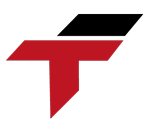In Malaysia’s rapidly evolving industrial landscape, Graphical User Interfaces (GUIs) play a key role in enabling seamless human-machine interaction. From touchscreens on factory floors to complex SCADA dashboards, GUI technology empowers operators to monitor, control, and optimize industrial systems efficiently a vital element for Malaysia’s Industry 4.0 transformation.
What Is a Graphical User Interface (GUI)?
A Graphical User Interface (GUI) is a visual system that allows users to interact with machines using icons, buttons, menus, and screens instead of text-based commands. In industrial environments, GUIs serve as the visual control layer displaying data, alarms, and process statuses in real time through touchscreens or monitors.
![]()
What Role Does GUI Play in Industrial Automation?
In automation systems, GUIs serve as the bridge between human operators and complex control hardware.
GUI as the Visual Layer of HMI Systems
Within Human-Machine Interfaces (HMIs), the GUI is the top visual layer that connects operators to programmable logic controllers (PLCs) and SCADA systems. It displays real-time parameters such as temperature, pressure, or motor speed, allowing engineers to make instant adjustments. Modern HMIs integrate GUI features like multi-screen visualization, drag-and-drop configuration, and touch-enabled SCADA dashboards to improve system accessibility and awareness.
How GUI Enhances Operator Efficiency and Safety
A well-designed GUI supports quick decision-making through data visualization and alarm management. For example, an operator dashboard can highlight abnormal readings in red or trigger alarms for unsafe conditions. This not only boosts efficiency but also reinforces workplace safety, ensuring timely interventions in case of equipment failures or process deviations.
What GUI Technologies Are Used in Automation Systems?
Common GUI Frameworks and Platforms: Leading automation software such as Siemens WinCC, Wonderware InTouch, and Ignition SCADA use GUI frameworks like Qt for cross-platform visual design. These tools enable developers to build interactive dashboards, charts, and process diagrams that integrate seamlessly with PLCs.
Touchscreen and Embedded GUI Hardware: On the hardware side, GUI systems are often implemented on industrial panel PCs and touchscreen HMIs. Devices like Allen-Bradley PanelView or Weintek HMI panels feature rugged construction for factory environments, supporting embedded operating systems that ensure durability and reliability.
What Are the Key GUI Design Principles for Industrial Applications?
Ergonomics and Usability in Industrial GUI: A user-friendly interface should follow ergonomic design principles, ensuring operators can easily interpret information under varying conditions. Features such as consistent layouts, clear icons, and intuitive navigation help reduce fatigue and prevent errors. Standards like ISO 9241 and IEC 60204 guide industrial designers in creating safe and efficient control panels.
Color Coding and Data Visualization Standards
Industrial GUI designers often follow the ISA101 HMI Design Standard, which specifies guidelines for color usage and alert hierarchies.
For example:
- Green: Normal operating state
- Yellow: Warning
- Red: Alarm or fault condition
These standards ensure consistent visualization, allowing operators to recognize critical issues instantly.
How Does GUI Integrate with Industrial Control Systems?
For automation systems to function seamlessly, GUIs must communicate effectively with control devices and cloud systems.
- Communication Between GUI and PLC/SCADA: GUIs connect with PLCs and SCADA software using industrial communication protocols like Modbus TCP/IP, OPC UA, and Ethernet/IP. This enables real-time data exchange, ensuring accurate representation of field device statuses on the operator screen.
- Real-Time Data and Cloud Connectivity: With the rise of Industrial IoT (IIoT), GUI dashboards now link directly to cloud platforms such as AWS IoT Core or Azure IoT Hub. This connectivity allows manufacturers to access live production data, historical logs, and predictive analytics from anywhere — supporting Malaysia’s shift toward smart factories.
![]()
What Are the Future Trends in GUI and Industrial Interfaces?
The future of GUI in industrial automation is shaped by emerging technologies that make control systems more intelligent and immersive.
AI-Driven and Voice-Enabled Interfaces
Next-generation GUIs are integrating artificial intelligence for predictive maintenance, intelligent alarms, and voice-based control. AI-enhanced HMIs can automatically adjust layouts or suggest optimal machine settings based on operational data, improving decision-making accuracy.
Augmented Reality (AR) and 3D Visualization
AR-enabled interfaces are transforming maintenance and training by overlaying digital information on physical equipment. Using tools like Microsoft HoloLens, technicians can visualize machine data in 3D, streamlining troubleshooting and remote collaboration.
How to Choose the Right GUI Solution for Your Factory?
Choosing the right technology partner is just as important as selecting the right GUI solution. A reliable provider ensures not only successful implementation but also long-term performance, integration support, and scalability. In Malaysia’s rapidly advancing automation landscape, Flextech stands out as a trusted provider of industrial GUI, HMI, and automation display solutions.
Partnering with Flextech brings several key advantages:
- Proven Industry Expertise: Years of experience delivering automation display and control systems for manufacturing, F&B, and logistics industries.
- Comprehensive Solutions: From industrial panel PCs to embedded GUI systems, Flextech offers both hardware and software tailored for Industry 4.0 environments.
- Seamless Integration: Full compatibility with leading automation platforms such as Siemens, Allen-Bradley, and Omron.
- Local Support and Maintenance: On-ground technical service in Malaysia ensures fast response times and reliable after-sales support.
- Future-Ready Technology: Solutions designed for IoT, cloud monitoring, and smart factory applications, ensuring scalability and modernization.
With a focus on quality, reliability, and innovation, Flextech empowers Malaysian manufacturers to visualize, control, and optimize every process efficiently. Get in touch with Flextech today to discover customized GUI and HMI solutions that drive productivity, safety, and long-term industrial success.


